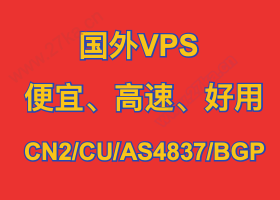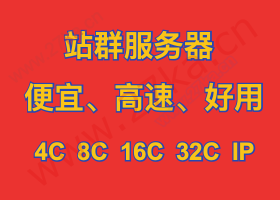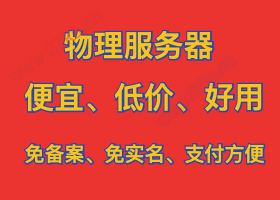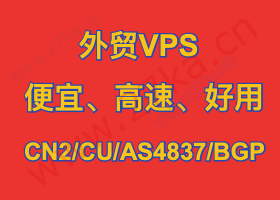Lecture 10 Geometry 1 (Introduction)
Many Ways to Represent Geometry
Implicit
algebraic surfacelevel setsdistance functions…
Explicit
point cloudpolygon meshsubdivision, NURBS…
Each choice best suited to a different task/type of geometry
(一)、“Implicit” Representations of Geometry 1、What is implicit geometry Points satisfy some specified relationship
E.g. sphere: all points in 3D, where x2+y2+z2 = 1
More generally, f(x,y,z) = 0
隐式几何:表示一定的关系,并不给你实际的点(比如一个球的函数x2+y2+z2 = 1)
更通用来讲,定义一个函数f(x,y,z) = 0,只要满足这个式子,就认为这个(x,y,z)是我定义的表面上的一个点,如果能找到所有点就能把这个表面画出来。(如上图)
2、Implicit Surface – Sampling Can Be Hard
What points lie on f(x,y,z) = 0?
Some tasks are hard with implicit representations
隐式几何存在一些问题,如上面的式子,如果一个点满足以上式子的关系,则认为这个点在这个函数所表示的几何的面上,但是如果去求哪些点满足这样一个式子,是相对复杂的问题。虽然我们能直接画出来,是一个圆环的结构,但是单单看式子,很难看出。也就是说隐式几何很难看出函数所表示的几何的“真容”。
3、Implicit Surface – Inside/Outside Tests Easy
f(x, y, z) = x2+y2+z2-1
Is (3/4, 1/2, 1/4) inside?
Just plug it in:f(x,y,z) = –1/8 < 0
Yes, inside.
Implicit representations make 便宜香港vps some tasks easy
隐式几何也有一些好处,如上面的问题,判断任何一个点和几何的相对位置关系,只需将这个点带入隐式几何的函数中即可判断。如果得到的结果是正数,则说明点在几何外;如果得到的结果是0,则说明点在几何上;如果得到的结果是负数,则说明点在几何内。隐式的表示可以很容易让我们判断一个点在几何内还是外。
(二)、“Explicit” Representations of Geometry 1、What is explicit geometry
All points are given directly or via parameter mapping
显式几何:把所有点都表示出来,如三角形,把面上的点确确实实都表示出来。
另一种显式的方法是通过参数映射。如上图,定义一个uv空间,上面有任意一个点用坐标uv表示,对应每一个uv值都可以映射到三维空间上的某一个点,把uv上所有的点都遍历一遍,就可以得到所有点的xyz,在三维空间中得到一个完整的几何体。
2、Explicit Surface – Sampling Is Easy
f(u, v) = ((2 + cos u) cos v,(2 + cos u) sin v,sin u)
What points lie on this surface?
Just plug in (u,v) values!
Explicit representations make some tasks easy
通过uv的参数映射,我们可以得到三维空间中所有点的xyz,得到这样一个几何体,因此显式几何可以很容易地看出几何图形的“真容”
3、Explicit Surface – Inside/Outside Test Hard
f(u, v) = (cos u sin v,sin u sin v, cos v)
Is (3/4, 1/2, 1/4) inside?
Some tasks are hard with explicit representations
但是显式几何对于判断一个点与几何的相对位置(在几何内还是在几何外还是在几何上)就很困难,通过式子无法得到。
总结:Best Representation Depends on the Task!
(三)、Implicit Representations in Computer Graphics
Many Implicit Representations in Graphics
Algebraic surfacesConstructive solid geometryLevel set methodsFractals… 1、Algebraic Surfaces (Implicit)
Surface is zero set of a polynomial in x, y, z
用隐式去表示一些几何当然可以,但是如果只给出式子,不给出几何图形的样子,我们很难通过式子看到几何的“真容”,而且对于更加复杂的几何(如奶牛),如何去做?无从下手!
2、Constructive Solid Geometry (Implicit)
Combine implicit geometry via Boolean operations
通过一系列基本几何的基本运算,来定义一些新的几何。
在建模软件中运用广泛(布尔运算)。
3、Distance Functions (Implicit)
Instead of Booleans, gradually blend surfaces together using Distance functions:
giving minimum distance (could be signed distance) from anywhere to object
距离函数:空间中任意一点到你想要表述的几何形体上任意一点,他们之间的最小距离。这个距离有正负。如果有一个点在几何形体外面,则最小距离算出来之后加个正号,如果在内部最小距离加符号。把这两个物体各自的距离函数都算出来之后,把两个距离函数做一个融合(blend)再把他恢复成原来的物体,就可以得到上图的效果。
An Example: Blending (linear interp.) a moving boundary
如上图,A表示距离左侧1/3面积都是黑色,B表示距离左侧2/3面积都是黑色,A和B做一次blend,得到的结果就是1/3黑色(左侧),1/3灰色(中间),1/3白色(右侧)。
对A单独做一次SDF(SDF(A)),那么就可以得到A上任意一点的距离函数。我们认为A的黑白分界线为0,若一个点越接近于黑白分界线,距离函数的值越小,越接近于0,向右(白)为正,向左(黑)为负。
同理对B也单独做一次SDF(SDF(B))。
将SDF(A)和SDF(B)做一次blend,得到blend( SDF(A),SDF(B))。那么这个blend后的图像中间即为0,向右(白)为正向左(黑)为负。把这个blend( SDF(A),SDF(B))通过SDF再恢复成原来的形状,就可以知道,0的地方就是他们的边界,非0的地方不是。也就是说,blend两个对应的SDF,实际就是在blend他们的边界。
Can blend any two distance functions d1, d2:
Scene of Pure Distance Functions
隐式几何之间,如果要实现比较圆滑的过度,就是通过距离函数来实现的。
Level Set Methods (Also implicit)
Closed-form equations are hard to describe complex shapes Alternative: store a grid of values approximating function
Surface is found where interpolated values equal zero Provides much more explicit control over shape (like a texture)
距离函数blend出来之后得到的函数,如何再把它恢复成表面?我们只需要把距离函数对应的0的位置全部找出来( f(x)=0 )。
但是当距离函数不太好通过式子表示出来时,可以通过其他方法表示出来,如上图,通过水平集的方法表示。把函数的表述写在了格子上,只需要在格子上找到值为0的那条线,即为表面。(和等高线类似,在不同位置有相同值)至于在什么地方应该等于0?前面已经学过双线性插值了,可以解决这个问题。
Level Sets from Medical Data (CT, MRI, etc.)
Level sets encode, e.g., constant tissue density
水平集还可以被用于三维中
Level Sets in Physical Simulation
Level set encodes distance to air-liquid boundary
包括这种水花四溅的效果,水花和水花融合在一起,也可以通过水平集(距离函数)实现。
4、Fractals (Implicit)
Exhibit self-similarity, detail at all scales
“Language” for describing natural phenomena
Hard to control shape!
分形。
如雪花:每个边上都有六边形,在看更小的地方又有六边形,再看更小的地方又有一个个六边形(递归)。
中间这个植物(西蓝花的一种),看这个植物,有很多凸起,看一个凸起上又有很多凸起,再去看一个小的凸起又有很多凸起…
分形在渲染的时候会引起强烈的走样,因为物体变化的频率实在是太高。
(四)、Explicit Representations in Computer Graphics
Many Explicit Representations in Graphics
triangle meshesBezier surfacessubdivision surfacesNURBSpoint clouds… 1、Point Cloud (Explicit)
Easiest representation: list of points (x,y,z)
Easily represent any kind of geometry
Useful for LARGE datasets (>>1 point/pixel)
Often converted into polygon mesh
Difficult to draw in undersampled regions
最简单的显式几何。
把物体表面上一堆点的每一个点都表示为一个点,也就是说模型由一个个点点组成。如上图,当点云的密度非常大的时候,模型看起来没有什么问题,但是图片自上往下点云密度逐渐稀疏,整个模型也就看不出来了。因此如果想用点云表示物体需要点云的密度非常大。一般在扫描模型的时候会用到(然后还会再转化为一个个面)
2、Polygon Mesh (Explicit)
Store vertices & polygons (often triangles or quads)
Easier to do processing / simulation, adaptive sampling
More complicated data structures
Perhaps most common representation in graphics
多边形面在图形学中得到广泛应用。
The Wavefront Object File (.obj) Format
Commonly used in Graphics research
Just a text file that specifies vertices, normals, texture coordinates and their connectivities
在图形学中如何表示用三角形面形成的物体?
将.obj文件拓展名改为文本文件,就会得到上图的一系列数据。v开头的是记录的顶点信息,vt记录的是纹理信息,vn记录的是面法线信息,f记录的是由哪三个(顶点/纹理/面法线)组成一个三角形。上图记录的是一个立方体的模型数据,有一些多余的数据是由于自动建模中数据冗杂造成的。








